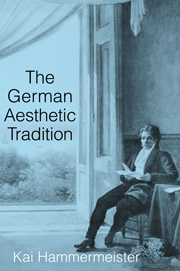6 - Schopenhauer
Published online by Cambridge University Press: 14 January 2010
Summary
Without much doubt, Arthur Schopenhauer (1788–1860) is the one philosopher of art with the largest influence on artists, on their understanding of themselves, and on their artistic production. The list of those who acknowledge debts to Schopenhauer is long: the writers Friedrich Hebbel, August Strindberg, Thomas Hardy, Emile Zola, Marcel Proust, Thomas Mann, Edgar Allan Poe, Charles Baudelaire, Stephane Mallarmé, Joseph Conrad, André Gide, Robert Musil, Samuel Beckett, W. B. Yeats, Jorge L. Borges, Thomas Bernhard, and Arno Schmidt; the painter Eugene Delacroix; the composers Richard Wagner, Arnold Schönberg, Sergey Prokofiev, and Nikolay Rimsky-Korsakoff, as well as numerous others. Yet as pronounced as Schopenhauer's influence on the artistic community itself is, his effect on significant philosophers in general and on philosophical aesthetics in particular is negligible. With the exception of Friedrich Nietzsche, who is less a disciple than an idiosyncratic commentator with his own agenda, Schopenhauer's thought on art remained isolated in the history of ideas. Hence, his writings do not mark the beginning of a new productive approach to the riddle of art as much as they signal the beginning of the dismantling of the idealist tradition. Historically, the importance of Schopenhauer does not result so much from his effect on future thinkers; it lies in the fact that with him, the skeptical reaction against the achievements of idealism sets in and is clearly visible.
- Type
- Chapter
- Information
- The German Aesthetic Tradition , pp. 111 - 127Publisher: Cambridge University PressPrint publication year: 2002

